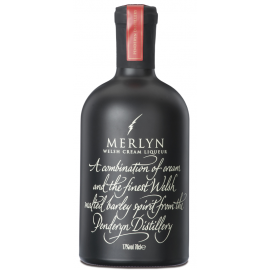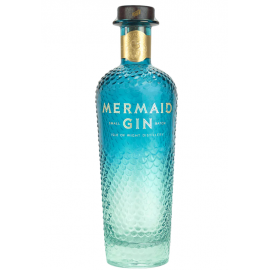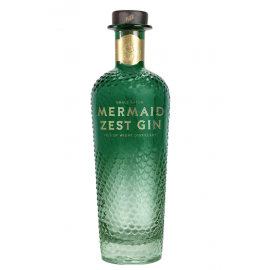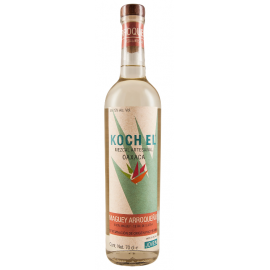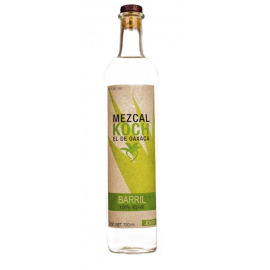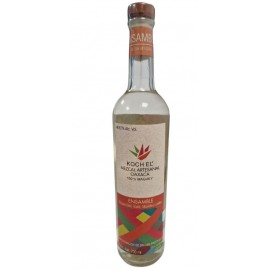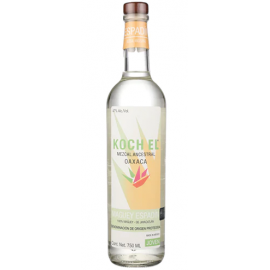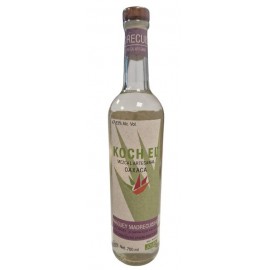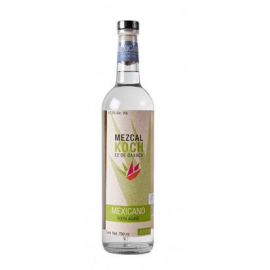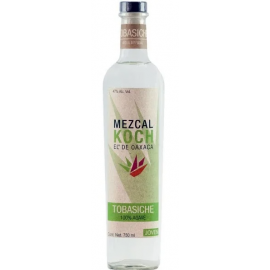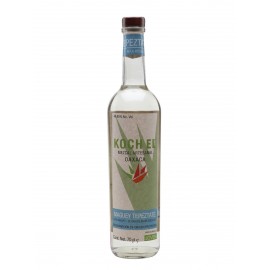Merlyn Cream Liqueur Penderyn
Penderyn Merlyn is a magical creation of the purest spirit and the finest cream from the land of legends.
Mermaid Gin
Handcrafted on the Isle of Wight since 2014 using ten ethically sourced botanicals, Mermaid Gin offers a smooth yet complex blend of fresh organic lemon zest and peppery grains of paradise, with a hint of sea air from fragrant, wild rock samphire. A refreshing and invigorating serve for free spirits.
Mermaid Gin Zest
Mermaid Zest Gin is an aromatic, tangy infusion of Mermaid Gin with summer citrus and wild coastal forages. Cascading grapefruit and hops are blended with island bergamot, lemon zest and rosemary, 'the dew of the sea', then distilled and infused with the signature gin. The result is a zesty, fresh spirit with a hint of sea air.
Mezcal Koch Maguey Arroqueno - 47.13 %
och Arroqueno is made with wild maguey Arroqueno (agave Americana). Typically, this agave can take up to 20 years to mature, before it is pit roasted in a traditional fashion. Given the length of time needed to grow this elegant agave, sustainability of Arroqueno has become a big issue. The Koch Arroqueno is made by Adrian Bautista in Rio de Ejutla, Oaxaca. This mezcal has high fruity notes with hints of earth and herbs, clay and smoke.
Mezcal Koch Maguey Barril - 47.06 %
Any certified mezcal will state the scientific plant name using the term Agave, while the common name that is used in the community and by the producer is listed as Maguey. For example, Maguey espadin is an Agave angustifolia.
Mezcal Koch Maguey Ensamble 4 agaves - 48.87 %
This mezcal offers the perfect balance of flavours from four wild agave distillations: Cirial, Tobalá, Tobasiche and Lumbre. The agave Cirial creates a spiciness and a mineral element, while the Tobalá adds a thick body and sweetness. Lumbre and Tobasiche give depth and herbal characteristics. All the flavours emerge gradually and are easy to isolate and identify. The Mezcal Koch Ensemble offers a unique tasting experience that can easily compete with the best spirits in the world.
Mezcal Koch Maguey Madrecuishe - 47.53 %
Madrecuishe Maguey madrecuishe (madre-cuixe, madrecuixe) is an Agave karwinskii. It grows mostly in dry climates, and typically takes a tall, cylindrical shape. Due to the agave’s dense core and low water content, mezcal made from Maguey madre-cuishe typically has high minerality with vegetal and floral notes.
Mezcal Koch Maguey Mexicano - 47.3 %
Maguey mexicano (Agave rhodacantha) is also known as “dobadaan” in some regions, which is its local name in Zapotec. Though exact numbers are unknown, some speculate that there are seven or more sub-varieties of Maguey Mexicano that each produce different characteristics in mezcal. Some of those include Maguey mexicano penca larga, mexicano penca corta, mexicano liso, chontal, and amarillo grande. Many of these sub-varietals are very different looking plants.
Mezcal Koch Maguey Tabasiche - 47.10 %
Maguey tobasiche (or tobaziche) is an Agave karwinskii. Depending on region, the names tobaziche and largo may be referring to the same plant.
Mezcal Koch Maguey Tepeztate - 46.85 %
Maguey tepeztate (or tepextate) is an Agave marmorata. It produces beautiful quiotes at the end of it’s life that flower a rich yellow before turning to seed. Tepeztate takes as many as 25 years to mature in the wild, and sustainability efforts are needed in order to keep mezcal production of this agave in the future. Despite all odds it seems to flourish best on the sides of steep rocky cliffs. In certain areas of Puebla there is a smaller sub-varietal of the Agave marmorata that grows with lateral white stripes across the pencas. These agave can go by the name pichomel, pichorra, or pizorra depending on location.
Mezcal Koch Maguey Tobala - 47.24 %
Maguey tobala (Agave potatorum) grows wildly at high altitudes and it is often cultivated as well. Its relatively minuscule size yields extremely limited quantities of intensely aromatic mezcal. Due to its tiny size and long growing period (12-15 years), Maguey tobalá is becoming increasingly rare in some regions. Unlike most other maguey, tobala does not produce hijuelos, which are the shoots or pups that sprout around the main plant once it has matured. For this reason, tobala can only grow from seed. Towns like Santa Catarina Minas, Oaxaca have two different types of Maguey tobala: tobala chino which grows in the sun, and tobala orejon which grows in the shade. This difference in sunlight is amplified over the 12-15 years it takes for the plants to reach maturity, and the two ...




